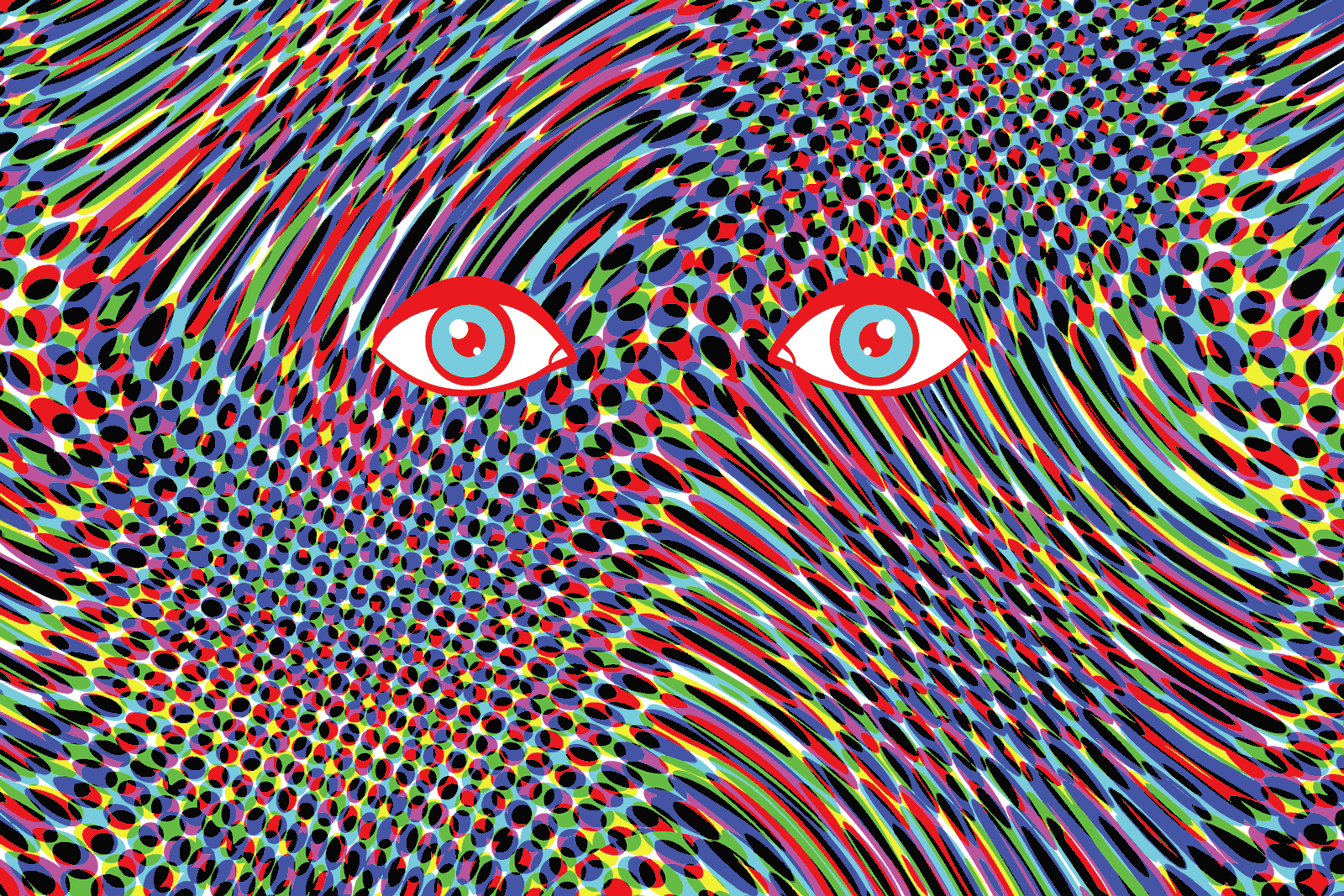LSD Microdoses Proven to Sharpen Mental State
May didn’t notice much with the first dose of LSD. She felt good, and she got a lot accomplished, and that was all.
It was the day after that things really clicked. She felt even better, and she got a lot more accomplished. She repeated this pattern for a month — one 10-microgram dose of LSD every fourth day — as per the regimen recommended by psychologist and microdosing research pioneer James Fadiman’s protocol, made mainstream-famous by Ayelet Waldman’s monthlong LSD self-study chronicled in last year’s A Really Good Day.
“I did a little experiment,” says May, a 64-year-old psychotherapist in Marin County requesting anonymity. “It was this game on my iPad that I was kind of stuck on, and I noticed that whenever I was on day two of the microdosing [regimen], my performance was significantly better.”
This wasn’t May’s first time doing acid. She’d taken LSD (full name: lysergic acid diethylamide) sporadically over the past 40 years. This was, however, her first foray into microdosing. She’d heard promises that microdosing LSD would yield heightened productivity and dissipate mental clutter.
“For me, it's just clarity. It's like how you would feel if you had a really good, deep rest, and then woke up and were able to focus very clearly.”
Microdosing is trendy. From Waldman’s 2016 book and media tour, to coverage at Marie Claire and The New Yorker, to fodder for podcasts geared toward self-described psychonauts and psychedelic-naive laypeople alike, to how-to manuals and private “microdosing coaching” sessions at $97 a pop, low-dose psychedelic use has become the drug fad du jour. The subscribers on a Reddit forum devoted to microdosing nearly quintupled in the span of a year and a half, as Wired noted last summer. Then, there were 7,500 members. The forum has doubled in size in the year since then.
So what’s happening physiologically to someone on a low dose of LSD? In the absence of hard science, reports from volunteers like May make up the only existing literature. And if the dose is in fact very, very micro, not much happens at all. Says May, “I did not have any sensory stuff tied to it.” On occasions where she’d taken higher doses of LSD in the past, she’d experienced some hallmarks of an altered state, but not with microdosing. “That’s not what I was going for.”
All reporting on microdosing’s purported benefits has been anecdotal, speculative. The machinery of science moves much more slowly than hype. But the science is starting to catch up. The first glimpses of data on microdosing were presented on April 21, at Psychedelic Science 2017, a six-day summit in Oakland of more than 100 clinical researchers and physicians and 2,500 psychedelic enthusiasts. Fadiman shared results from his ongoing study’s first 418 volunteers. (He’s hesitant to call them “subjects,” because his study doesn’t follow classic research design.) People sign up to receive his self-study protocol and instructions online, which detail the month-long plan that May and Waldman followed. The participants have to find the study drugs on their own. A notice on the study’s site reads, “Please DO NOT ASK US about: how or where to find substances. [sic]”
LSD isn’t the only microdose included in the protocol; psilocybin (the active alkaloid in magic mushrooms) and iboga (a psychoactive shrub) are part of it as well, plus other psychedelics as long as they’re dosed somewhere between 5 and 10 percent of the “normal recreational dose.” For LSD, Fadiman accepts self-reports from individuals ingesting between 8 and 15 micrograms, though he recommends starting with 10. A daily check-in instrument asks contributors to rate their mood, productivity, and energy on a scale.
“And then we ask people to write us a report,” says Fadiman in an interview with The Verge. “Which is where, from my point of view, things get really interesting.”
Fadiman and co-investigator Sophia Korb’s site went up in February; over 1,000 people have filed self-reports to date. On one (really good) day, participants submitting write-ups hailed from nine different countries.
He briefly shares a few stories from the project with me: A man suffering depression credits microdosing with giving him the confidence to bid for a whole project on behalf of his company, rather than for a small piece. An engineer who says he gains the ability to see all the moving parts of the machine he’s working on in synchronicity, rather than fixating on one aspect. Another individual who, Fadiman reports, “said it very nicely: ‘I’m a much better version of myself.’” There are two big takeaways from Fadiman’s results so far: microdosing can be an aid for productivity, and it can provide relief for treatment-resistant depression.
LSD is mostly known as the mascot for 1960s counterculture. Its widespread use became one of the impetuses for 1970’s Controlled Substances Act. But there are no known overdose deaths attributed to LSD. Psychedelic resource Erowid does report on a low number of deaths associated with LSD, and advises caution. In some cases, though, deaths linked to LSD were either not LSD at all (other drugs come on blotters, too), or the result of accidents or suicide on especially high doses.
Says Erowid, “Put simply, LSD does not cause death at recreational or therapeutic doses (less than 500 [micrograms]).” Microdosing is one-fiftieth of that amount.
“LSD is a totally amazing substance,” says Ralph Metzner, a psychopharmacologist considered a forefather of LSD research. “Because it is so potent, and such tiny amounts and tiny differences in tiny amounts make such a huge difference. […] Its sensitivity is off the charts. There's no other drug that comes close to that kind of sensitivity.”
Microdosing’s tiny dose is its key selling point. “The benefit of it being micro is you go about your normal daily activities,” says Rick Doblin, executive director of psychedelic research nonprofit MAPS. “Your cognitive processing is slightly enhanced in certain ways — more creative, more focused, little bit of a mood elevation — but you're not in any way tripping. And you can drive. You can do all sorts of things that you wouldn't do if the dose were higher.”
Lex Pelger, a 34-year-old biochemist and writer in Brooklyn, agrees that the effects are so mild they’re almost imperceptible. Pelger hosts Psymposia, an events group centered on psychedelic science, and says he microdoses every couple days, finding it helpful for interviewing, lecturing, and writing. “You just don’t need as much coffee that day,” he says.
Microdosing also has some history. Albert Hofmann, the Swiss chemist credited as the first person to synthesize and ingest LSD in 1943, told Metzner that he self-experimented with low doses of LSD in his later years, circa the 1990s. “Just to think,” Metzner says. Microdosing is quiet, reflective. Metzner likens it to taking a vitamin.
And though modern clinical investigations of psychedelics regulate dosage, mindset, and the environment around test subjects to ensure streamlined data, they can’t account for two factors that Metzner says determine the quality and intensity of a psychedelic experience: individual variability and learned sensitivity. Every individual will react to a psychedelic, particularly LSD, in a unique way. That microdosing is “micro” renders it a teaching tool.
“It's like learning to use a microscope,” says Metzner. “How to adjust the lens, and of course you have to know what it is that you're looking at.”...



